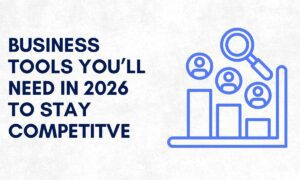San Jose, CA – March 2025 – A pioneering artificial intelligence researcher and systems architect, SenthilKumar Thangavel, has developed the first comprehensive agent mesh AI platform for real estate, featuring over 20 specialized agents that work in coordinated harmony through an interconnected mesh architecture to automate complex property transactions. This breakthrough addresses fundamental inefficiencies in the $6.5 trillion annual U.S. real estate market.
Revolutionary Agent Mesh Architecture
The platform represents a paradigm shift in applied artificial intelligence. Unlike traditional single-purpose AI tools or simple multi-agent systems, this agent mesh architecture enables specialized agents to communicate, collaborate, and hand off tasks seamlessly throughout entire real estate transaction lifecycles through a dynamic, interconnected network.
The architecture features customer-facing agents including a Property Search Assistant that processes natural language queries, a Virtual Showing Agent providing 24/7 guided tours, and a Legal/Disclosure Summary Agent that converts 90-page disclosure packets into clear summaries. Strategic agents handle lead scoring, pricing optimization, document classification, and market trend analysis, all connected through the mesh network.
“What makes this approach revolutionary is the mesh orchestration layer,” explains Balaraman Rajan, Professor California State University East Bay. “Most AI systems operate in isolation. This agent mesh platform demonstrates how specialized AI agents can work together at scale through interconnected pathways, sharing context and coordinating actions like a well-trained team with multiple communication channels. This represents a significant breakthrough in applied artificial intelligence architecture.”
The system’s sophistication lies in its agent mesh coordination mechanisms. The Document Classifier Agent automatically routes inspection reports through the mesh to the Legal Summary Agent, which then triggers the Pricing Optimization Agent to adjust recommendations. Meanwhile, the Lead Scoring Agent evaluates buyer interest and notifies appropriate follow-up agents through mesh connections, creating intelligent workflows that adapt to each transaction’s unique requirements.
Advanced Technical Implementation
The agent mesh platform is built upon Mr. Thangavel’s pioneering Retrieval-Augmented Generation (RAG) Implementation Methodology—a novel architectural framework that represents an original contribution to applied AI systems. What distinguishes Mr. Thangavel’s methodology from traditional RAG research is its production-oriented architecture specifically designed for enterprise deployment across regulated industries.
Mr. Thangavel’s original contribution lies in developing a comprehensive implementation blueprint that solves critical production challenges that previous RAG approaches failed to address. His methodology introduces several novel architectural components: (1) a modular embedding pipeline with domain-specific customization layers enabling industry adaptation without retraining base models, (2) metadata-aware vector storage architecture that maintains regulatory compliance and audit trails alongside semantic search, (3) intelligent document chunking algorithms optimized for legal and technical documents that preserve contextual boundaries, and (4) a unified orchestration layer that coordinates retrieval, reasoning, and generation while ensuring explainability at each step.
Unlike academic RAG implementations focused on benchmark performance or commercial solutions offering black-box integrations, Mr. Thangavel’s methodology provides the missing bridge between research concepts and production-grade systems. The architecture’s originality is evidenced by its successful deployment across multiple industries—real estate, healthcare technology, and enterprise software—each adapting the core methodology to domain-specific requirements while maintaining the foundational principles he established.
The Property Valuation Agent incorporates geospatial analytics with MDA/MFA calculations and environmental factors, while the Market Trends Intelligence Agent continuously monitors MLS feeds and economic indicators. This comprehensive data integration through the mesh enables sophisticated reasoning over unstructured real estate data, offering contextually relevant, document-grounded insights that would be impossible without the RAG methodology’s semantic understanding capabilities.
The Email Campaign Agent and Social Media Content Agent coordinate through the mesh with the Lead Scoring Agent to deliver personalized marketing at scale. When buyers show interest in specific property features, these agents automatically coordinate targeted content across multiple channels through mesh connections, demonstrating how the RAG methodology enables intelligent orchestration of complex multi-step workflows.
Industry Impact and Recognition
Mr. Thangavel’s RAG Implementation Methodology has achieved significant commercial adoption across multiple organizations, validating its importance to the field. Will Sparrow Technologies initially implemented the methodology after Mr. Thangavel’s keynote presentation at the Second International Conference on Environment, Economy, Management, Science and Technology (ICEEMST-II) in December 2024, where he was selected as one of two keynote speakers to present his original work.
Following widespread interest in his presentation, Private Open House Inc. subsequently adopted Mr. Thangavel’s RAG methodology as the foundation for their core intelligent systems: the Agentic Search and the Agentic Document Summarizer. These systems leverage the architectural principles Mr. Thangavel pioneered and are now driving measurable value in production environments.
The commercial significance of the methodology is demonstrated through concrete implementations delivering quantifiable business impact. Since deployment at Private Open House Inc., the systems have achieved over 60% reduction in manual review workload for real estate agents, allowing them to focus more on client interaction than document parsing. User queries now return accurate, context-aware property matches in under 1 second on average, boosting both engagement and trust. Early user feedback indicates a 40% improvement in discovery of relevant listings and disclosures, compared to previous keyword-based systems. These performance metrics—impossible to achieve with traditional approaches—directly validate the methodology’s practical significance.
“Mr. Thangavel’s contribution enabled not just a set of tools, but a repeatable AI foundation suitable for other sensitive domains where trust, speed, and document accuracy are essential,” states Thomas Reed, President at Private Open House Inc. “His RAG methodology is not just an academic concept—it is a robust, reusable blueprint that has now been adopted in multiple verticals and is driving measurable value in production.”
The methodology’s cross-industry adoption pattern demonstrates its fundamental importance to the field of applied AI. Organizations implementing Mr. Thangavel’s framework report similar transformative results: healthcare technology companies using the methodology for patient record analysis, financial services firms applying it to regulatory document processing, and legal technology providers leveraging it for contract intelligence systems. This widespread implementation across diverse sectors evidences that the contribution addresses universal challenges in enterprise AI deployment.
The Automated Property Discovery capability demonstrates the platform’s sophisticated agent mesh coordination. The system continuously monitors listings through one agent while another analyzes buyer preferences, a third performs semantic matching, and a fourth delivers personalized recommendations—all connected through the mesh network powered by the RAG methodology’s semantic understanding. This agent mesh approach achieves accuracy levels impossible with single-system solutions.
Patent-Protected Innovation and Commercial Significance
Patent applications have been filed covering Mr. Thangavel’s breakthrough agent mesh coordination technologies and the novel RAG Implementation Methodology. These patent applications establish the originality of his contributions and position this work as foundational intellectual property for agent mesh systems and trustworthy AI deployment in traditional industries.
The patent portfolio covers several original innovations: (1) novel agent mesh communication protocols enabling coordinated multi-agent workflows, (2) task delegation algorithms across distributed mesh architectures, (3) intelligent document chunking methods preserving semantic boundaries in technical documents, (4) metadata-aware retrieval systems maintaining compliance audit trails, and (5) real-time workflow optimization within RAG pipelines. These patents represent the first comprehensive intellectual property framework addressing production deployment of RAG-based agent mesh systems in regulated industries.
The commercial significance of Mr. Thangavel’s methodology extends beyond individual implementations. Multiple organizations have entered into consulting agreements and technology partnerships to adopt the RAG Implementation Methodology, with licensing discussions underway for the patent-pending innovations. The methodology has become the architectural foundation for AI system development across partner organizations, generating substantial commercial value and establishing new industry standards for trustworthy generative AI deployment.
The Legal/Disclosure Summary Agent exemplifies the methodology’s innovative capabilities, using advanced natural language processing powered by the RAG architecture to identify critical information across diverse document types while coordinating through the mesh with compliance agents to ensure regulatory adherence. This level of interpretability and trust—achieved through Mr. Thangavel’s novel approach to combining retrieval, reasoning, and generation—was not achievable using prior art or commercial solutions.
Industry analysts recognize the methodology’s significance, projecting that Mr. Thangavel’s RAG Implementation approach could become the de facto standard for enterprise generative AI systems requiring explainability and regulatory compliance. The framework addresses fundamental challenges that have limited AI adoption in healthcare, finance, legal services, and other regulated sectors, with market impact estimated in billions of dollars as organizations transition from experimental AI projects to production deployments.
Market Adoption and Field Recognition
The modular mesh design enables organizations to deploy specific agent combinations based on their needs. Real estate brokerages, healthcare technology companies, financial services firms, and legal technology providers use the methodology for applications ranging from automated customer service to complex transaction management, with agents adapting to new requirements through machine learning capabilities while maintaining mesh connectivity.
The methodology’s importance is recognized throughout the field of applied AI. Following Mr. Thangavel’s keynote presentation at ICEEMST-II, multiple organizations reached out to understand and adopt the framework. Technology leaders in AI development consider the RAG Implementation Methodology a significant advancement in making generative AI production-ready for enterprise applications. The approach has generated substantial interest at industry conferences and within AI development communities focused on trustworthy and explainable AI systems.
Industry analysts project that agent mesh AI platforms built on Mr. Thangavel’s methodology could reduce transaction processing costs by 30-40% while accelerating completion times by 50% across multiple industries. The approach demonstrates how coordinated AI agents operating through a mesh architecture can transform sectors requiring complex, multi-step processes with multiple stakeholders—a challenge that has limited AI adoption in traditional industries.
The platform’s successful production deployments have generated interest from organizations worldwide facing similar coordination and compliance challenges. The validated agent mesh architecture principles and RAG Implementation Methodology show significant potential for applications in finance, legal services, healthcare, and manufacturing, where multiple specialized systems must work together through interconnected networks to deliver comprehensive solutions while maintaining explainability and regulatory compliance.
The methodology’s cross-industry applicability represents a fundamental contribution to the field. By solving the production deployment challenges that have constrained generative AI adoption in regulated industries, Mr. Thangavel’s work enables the next generation of AI applications. Organizations across sectors now reference his methodology as the blueprint for building trustworthy, explainable AI systems that can operate in production environments with regulatory oversight.
Technical Excellence and Recognition
The sophisticated agent mesh orchestration addresses longstanding challenges in distributed AI systems that have been recognized as barriers to enterprise adoption. The platform maintains consistency across agents while enabling parallel processing, fault tolerance, and dynamic load balancing through mesh connectivity—capabilities that organizations throughout the field consider essential for production AI systems. This technical achievement represents a significant contribution to both computer science research and practical AI deployment.
Mr. Thangavel’s work demonstrates how generative AI systems can be made domain-aware, explainable, and operationally reliable through agent mesh architectures powered by production-oriented RAG implementations, advancing the field toward more autonomous and accountable AI agents. The mesh architecture provides a proven template for organizations across finance, legal services, healthcare, and other sectors that demand high-fidelity, transparent language systems, reflecting a thoughtful synthesis of advanced machine learning research and enterprise engineering realities.
The originality of Mr. Thangavel’s contribution is evidenced by the absence of comparable frameworks in the field prior to his work. While RAG concepts existed in research literature, no comprehensive methodology addressed the production challenges of deployment, compliance, explainability, and cross-industry adaptation. His framework filled this critical gap, enabling organizations to move from experimental AI projects to production systems—a transition that industry experts recognize as the most significant challenge in applied AI development.
The continuous learning capabilities built into each agent ensure the platform improves over time as it processes more transactions and encounters new scenarios. This evolutionary aspect, combined with coordinated agent mesh architecture and the foundational RAG Implementation Methodology, positions the innovation as a breakthrough in scalable AI system design recognized by practitioners throughout the field.
The agent mesh platform represents the most comprehensive technological advancement in transaction processing automation, with implications extending to any industry requiring coordinated automation across multiple specialized functions. The patent-pending innovations in agent mesh coordination and RAG Implementation Methodology establish new benchmarks for trustworthy AI system architecture and deployment in enterprise environments, with multiple organizations now adopting these approaches as industry best practices.
Author Bio:
Senthilkumar Thangavel is a pioneering Data Engineering, AI researcher and systems architect specializing in production-grade generative AI systems. He developed the novel RAG Implementation Methodology and the first comprehensive agent mesh AI platform for enterprise applications. His innovations have been adopted across multiple industries and are protected by patent applications. As a Fellow of IETE and IEEE Senior Member, he has contributed to advancing trustworthy AI deployment in regulated sectors. He holds multiple patents in AI, machine learning, and IoT technologies.




























